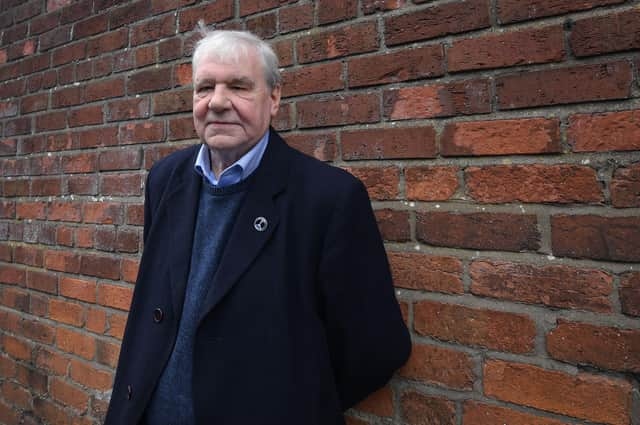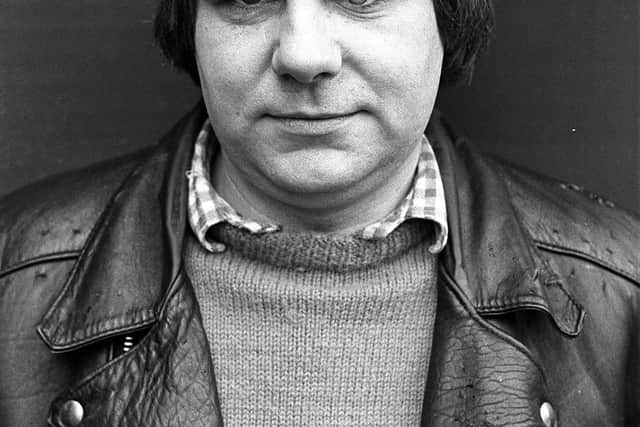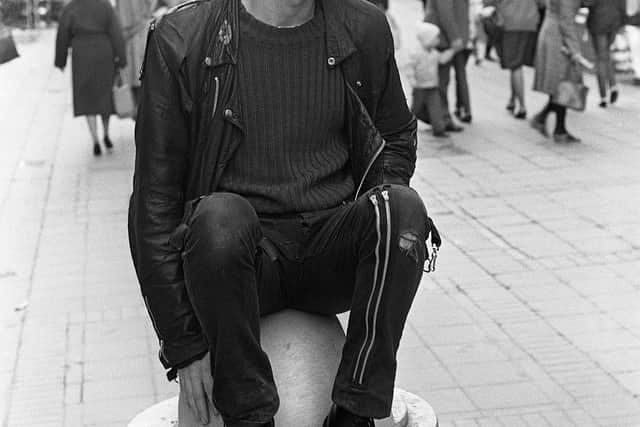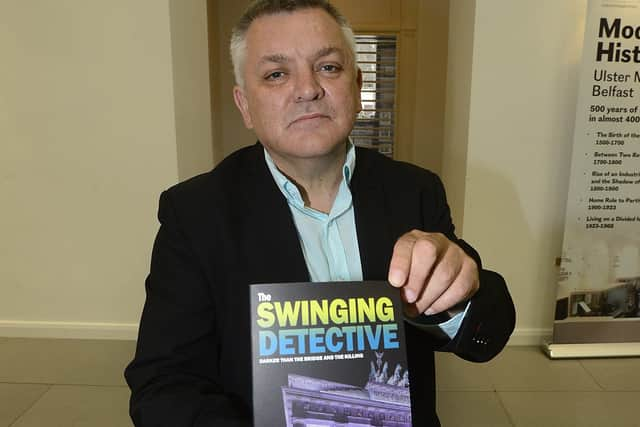Henry McDonald: Punk united a generation in Northern Ireland away from violence


My ‘Tardis’ for this journey was a home-made bar at the bottom of a garden in East Belfast.
It is a pub dedicated to all things related to The Clash, one of the most famous and influential punk bands to emerge in the mid to late seventies.
Advertisement
Hide AdAdvertisement
Hide AdThe dominant feature of the bar’s interior is a giant blow up copy of The Clash’s first album that came out in ’77.


Around the rest of the pub walls are framed LPs such as ‘Give ‘Em Enough Rope’ and ‘London Calling’.
There are photographs of the band members including the late Joe Strummer, shots of concerts, concert tickets, signed guitars and other Clash memorabilia.
The enormous poster featuring Strummer, Paul Simonon and Mike Jones from their debut LP was chosen as the backdrop for a series of interviews with the veterans of Ulster punk including yours truly.
Advertisement
Hide AdAdvertisement
Hide AdA film crew had travelled over from England on a three-day shoot for a documentary about punk’s legacy in Northern Ireland.


The main interviewer was an old punk rocker from the east end of London who got to know Strummer well, counting him as a friend and mentor.
He never forgot what The Clash’s frontman had once observed about punk’s importance over here.
Strummer noted that while New York might have had the original bands and London had the clothes in Belfast they “had the reason”.
Advertisement
Hide AdAdvertisement
Hide AdThe Clash’s singer recognised punk’s social and cultural impact in what at the time was a real war zone.


One of the most powerful testimonies to those times came from Buck who is still the frontman of Belfast punk group The Defects whom I first recall seeing around late 1979 or early 1980 in The Pound off Oxford Street.
At the very end of this interview, he was asked what his life might have been like without the influence of punk.
He replied that he could have ended up joining the UDA and wasting his life in paramilitarism.
Punk gave him an alternative outlet and outlook.
Advertisement
Hide AdAdvertisement
Hide AdA native of East Belfast punk enabled him to mix with youths he would never have met from all parts of the city as well as prompting him to form his band.
When Buck finished with his pay off-line I could see its impact on the faces of the interviewer and the director.
They knew this response got to the heart of the documentary’s theme: punk in Northern Ireland uniquely if temporarily united a section of that generation born into war, sectarian murder, division and despair.
The afternoon felt like a long reunion and we spent the intervals between each interview exchanging stories about those days as well as asking after characters we knew many of whom we haven’t seen for decades.
Advertisement
Hide AdAdvertisement
Hide AdWe joked that the local care homes of the future will have to cope with bike jacket wearing, spiked haired and studded old crusties trying to pogo away on their Zimmer frames at the weekly tea dances.
Among those other interviewees was Jim Reilly, the Stiff Little Fingers’ drummer and Terri Hooley, the godfather of Ulster punk.
It was particularly heartening to see Hooley still in fine form despite being well into his seventies.
He charmed and entertained the TV crew, and regaled us with his tales of wild rock n roll nights with various stars as well as once punching John Lennon!
Advertisement
Hide AdAdvertisement
Hide AdMy own contribution included recalling my ‘conversion’ to punk in the summer of 1977 while on holiday in Brighton and the P-checking moment in central Belfast two years later.
The latter related to about a dozen younger punks being stopped and questioned by a joint army-police patrol in Belfast city centre.
The RUC officer in charge became perplexed after he finished questioning us about where we all came from. He appeared astonished that our addresses ranged from Glencairn in the Upper Shankill to the Market area in the city centre, and from Divis Flats in the west to Ballybeen in the east.
It struck me that this gathering inside and outside The Clash theme bar represented a small but important tradition that has had a lasting positive socio-cultural legacy on this society.
Advertisement
Hide AdAdvertisement
Hide AdThese days social demographers and political pollsters would call it ‘Neither’.
Back in the 70s and 80s we simply didn’t want to be tribally pigeon-holed.
Whatever its nomenklature it has been a phenomenon that Northern Ireland should still be immensely proud of.
• Henry McDonald’s novel ‘Two Souls’ about Belfast youths being caught up in the punk movement, football hooliganism and paramilitarism is published by Merrion Press